NR 661 Dermatology LATEST QUIZ Bank Questions AND ANSWERS 2021
Document Content and Description Below
A microscopic examination of the sample taken from a skin lesion indicates hyphae. What type of infection might this indicate? (Fungal) Under microscopic exam, hyphae are long, thin and branching and... indicate dermatophytic infections. Hyphae are typical in tinea pedis, tinea cruris, and tinea corporis. A child with a sandpaper-textured rash probably has: (Strep infection) Streptococcal infections can present as a sandpaper-textured rash that initially is felt on the trunk. Rubeola, measles, produces a blanching erythematous “brick-red” maculopapular rash that begins on the back of the neck and spreads around the trunk and then extremities. Varicella infection produces the classic crops of eruptions on the trunk that spread to the face. The rash is maculopapular initially and then crusts. Roseola produces a generalized maculopapular rash preceded by 3 days of high fever. A 40-year-old female patient presents to the clinic with multiple, painful reddened nodules on the anterior surface of both legs. She is concerned. These are probably associated with her history of: (ulcerative colitis) These nodules describe erythema nodosum. These are most common in women aged 15-40 years old. They are typically found in pretibial locations and can be associated with infectious agents, drugs, or systemic inflammatory disease like ulcerative colitis. They probably occur as a result of a delayed hypersensitivity reaction to antigens. It is not unusual to find polyarthralgia, fever, and/or malaise that precede or accompany the skin nodules. A patient is diagnosed with tinea pedis. A microscopic examination of the sample taken from the infected area would likely demonstrate: (hyphae) Under microscopic exam, hyphae are long, thin and branching, and indicate dermatophytic infections. Hyphae are typical in tinea pedis, tinea cruris, and tinea corporis. Yeasts are usually seen in candidal infections. Cocci and rods are specific to bacterial infections. When can a child with chickenpox return to daycare? (After all lesions have crusted) Chickenpox is highly contagious and can be spread via respiratory secretions from an infected person or by direct contact from the vesicle fluid from lesions on the skin or mucus membranes. The usual incubation period is about 2 weeks but can be as long as 21 days or as short as 10 days. The greatest period of infectivity is 48 hours prior to the onset of the rash and until all the skin lesions have crusted over. A patient with a primary case of scabies was probably infected: (3-4 weeks ago) The incubation period for scabies is about 3-4 weeks after primary infection. Patients with subsequent infections with scabies will develop symptoms in 1-3 days. The classic symptom is itching that is worse at night, coupled with a rash that appears in new areas over time. The nurse practitioner examines a patient who has had poison ivy for 3 days. She asks if she can spread it to her family members. The nurse practitioner replies: (“No, transmission does not occur from the blister’s contents”) The skin reaction seen after exposure to poison ivy (or any other skin irritant), takes place because of contact with the offending substance. In the case of poison ivy, the harmful exposure occurs from contact with oil from the plant. The eruptions seen are NOT able to transmit the reaction to other people unless oil from the plant remains on the skin and someone touches the oil. The fluid found in the blisters is NOT able to transmit poison ivy to anyone; only the oil from the plant can do that. After oil has touched the skin, some time must pass for the reaction to occur. Therefore, reaction times vary depending on skin thickness and quantity of oil contacting the skin. Which chronic skin disorder primarily affects hairy areas of the body? (Seborrheic dermatitis) Seborrheic dermatitis causes flaking of the skin, usually the scalp. In adolescents and adults, when it affects the scalp, it is termed dandruff. When this occurs in young children or infants, it is termed “cradle cap”. The exact cause is unknown; however it has a propensity for hairy areas of the body such as the scalp, face, chest, and legs. It appears greasy and flaky. This may be seen in patients with Parkinson’s disease. A patient with diabetes has right anterior shin edema, erythema, warmth, and tenderness to touch. This developed over the past 3 days. There is no visible pus. What is the most likely diagnosis to consider? (Cellulitis) This description is one of cellulitis. Cellulitis involves an infection of the subcutaneous layers of the skin. It must be treated with an oral antibiotic. In a patient with diabetes, it is particularly [Show More]
Last updated: 1 year ago
Preview 1 out of 17 pages
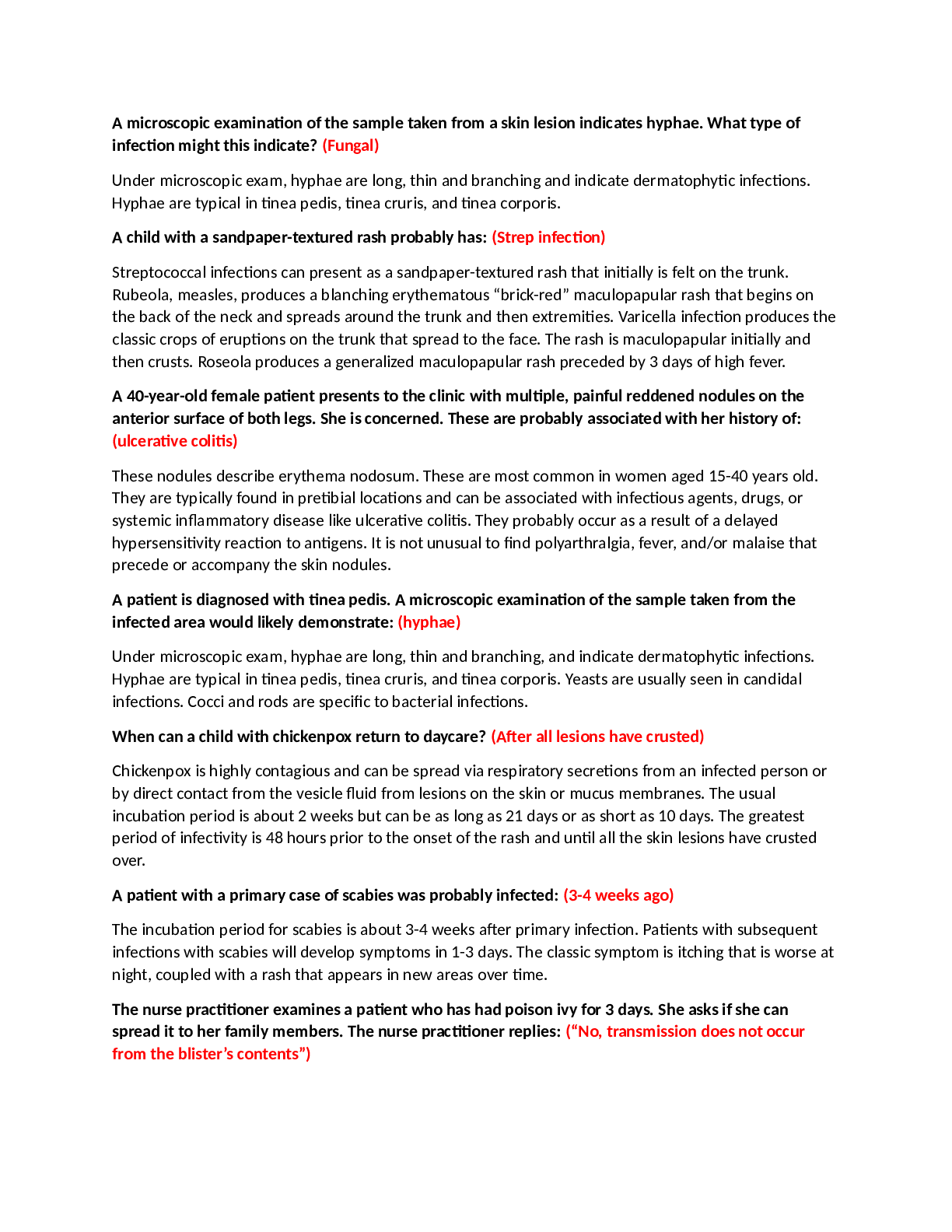
Reviews( 0 )
Document information
Connected school, study & course
About the document
Uploaded On
May 03, 2021
Number of pages
17
Written in
Additional information
This document has been written for:
Uploaded
May 03, 2021
Downloads
0
Views
32



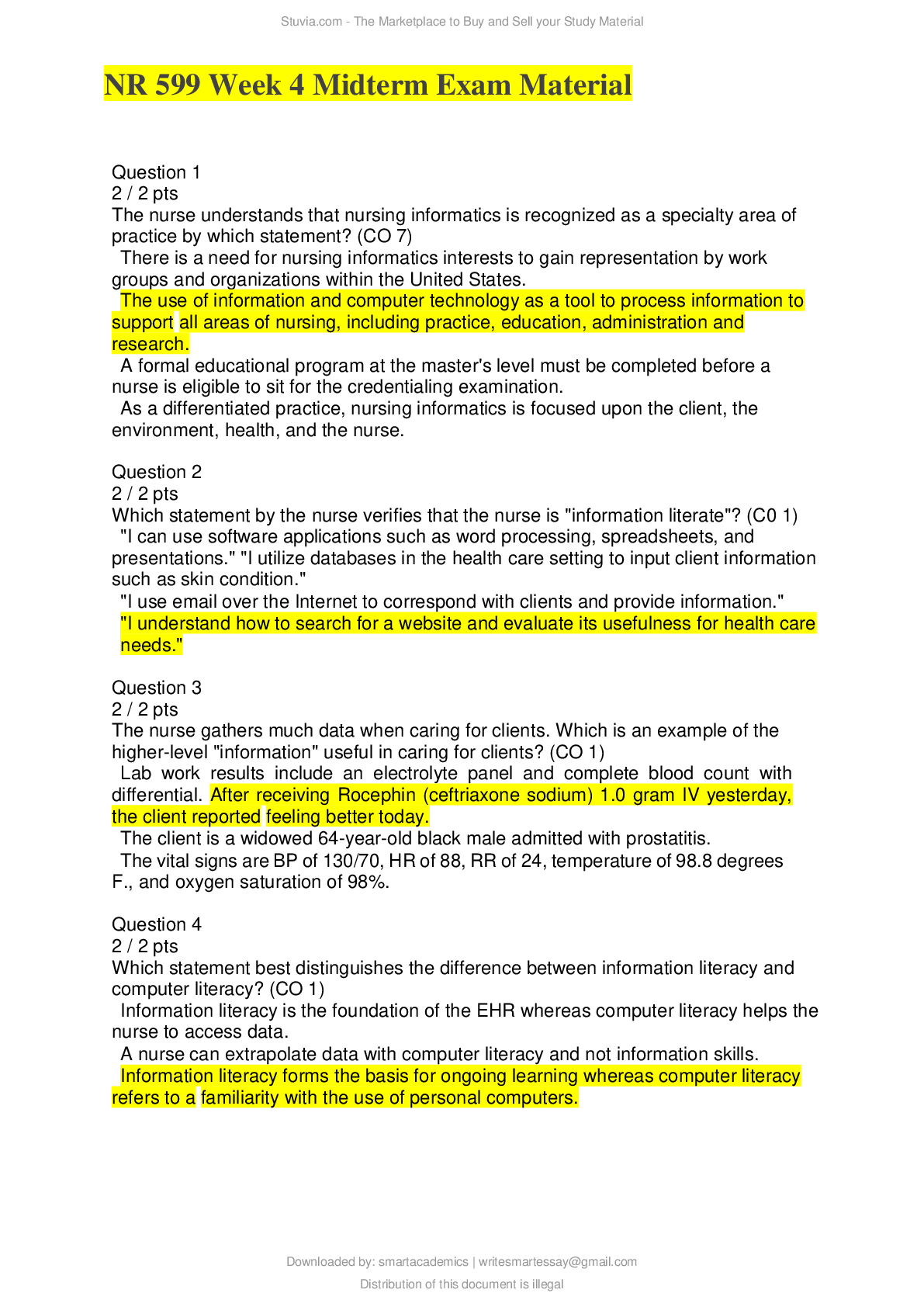

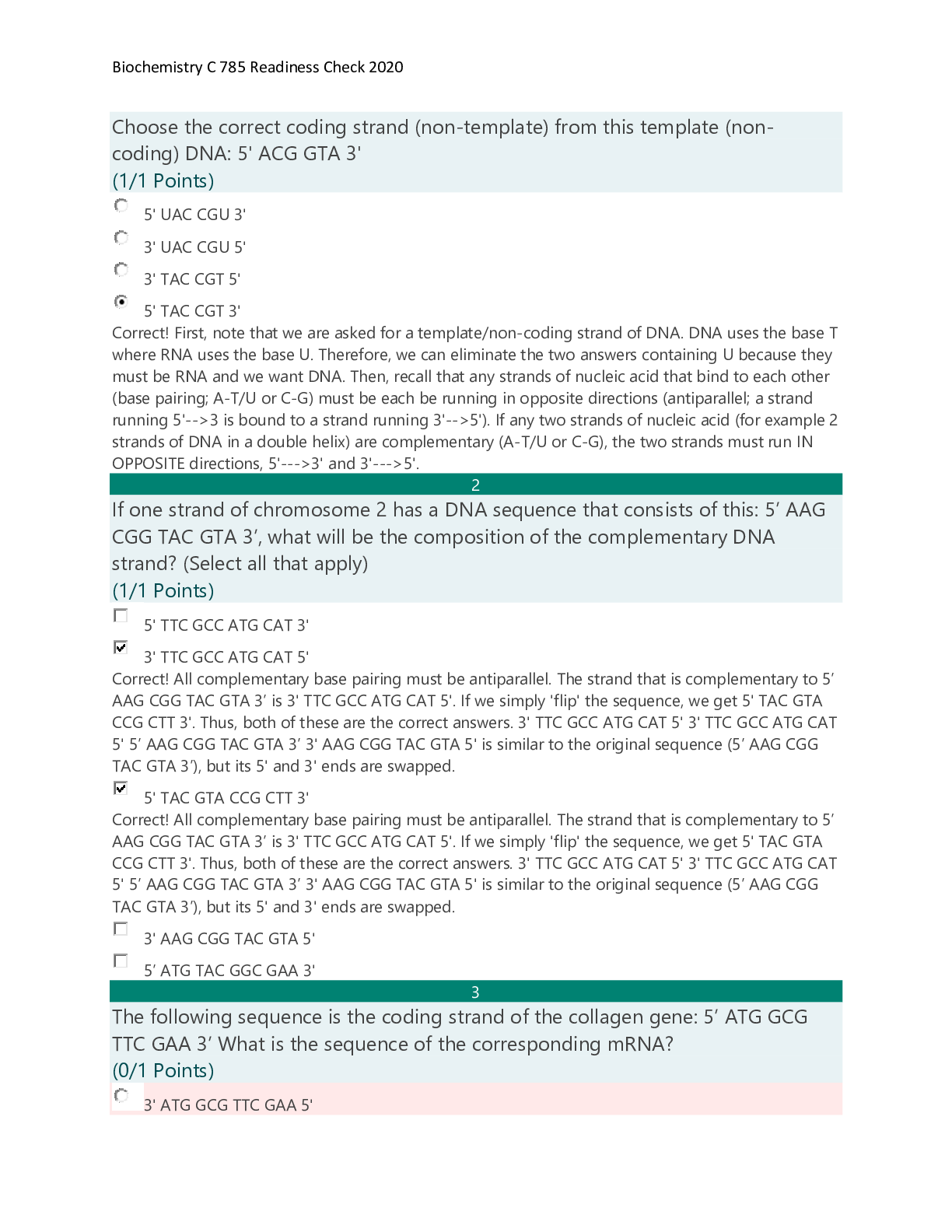
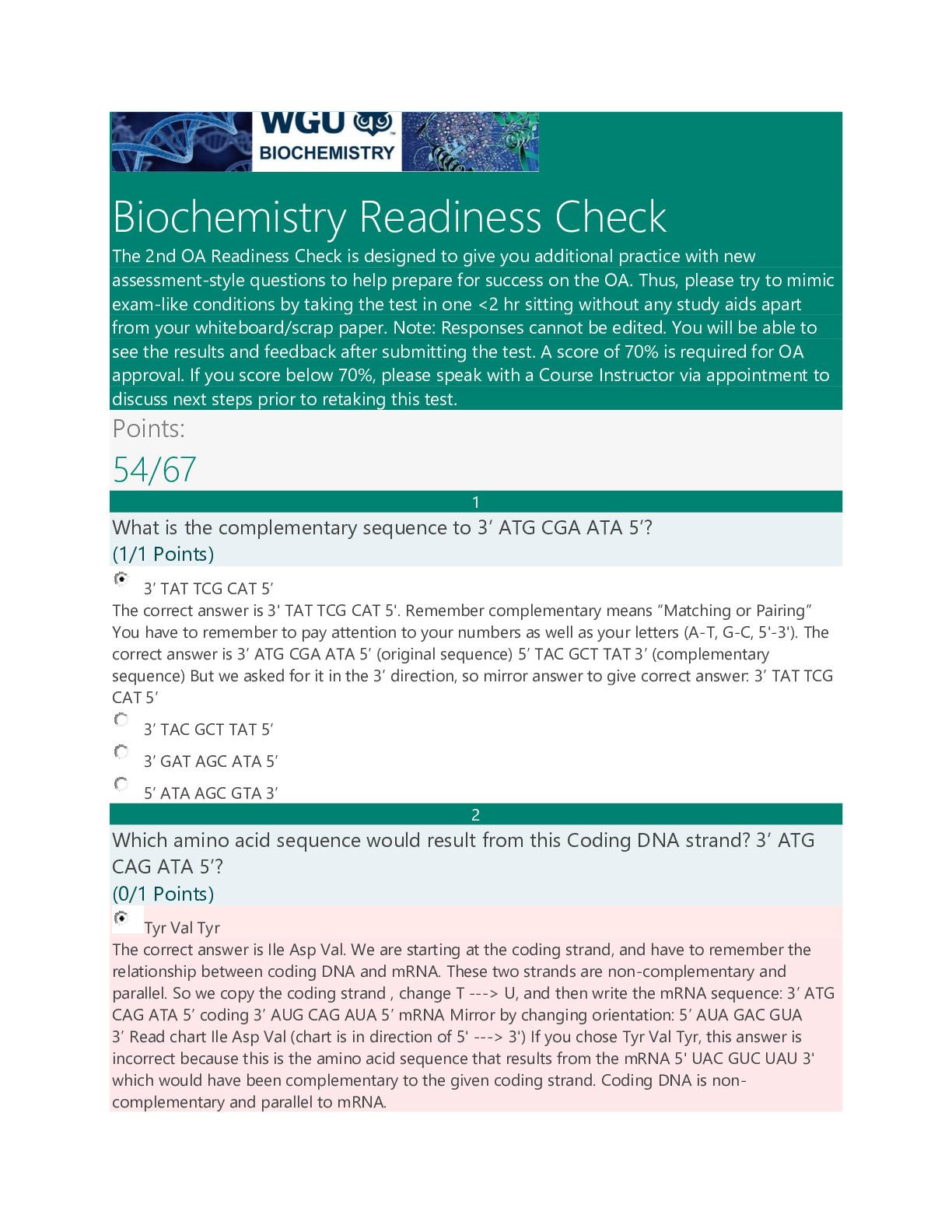
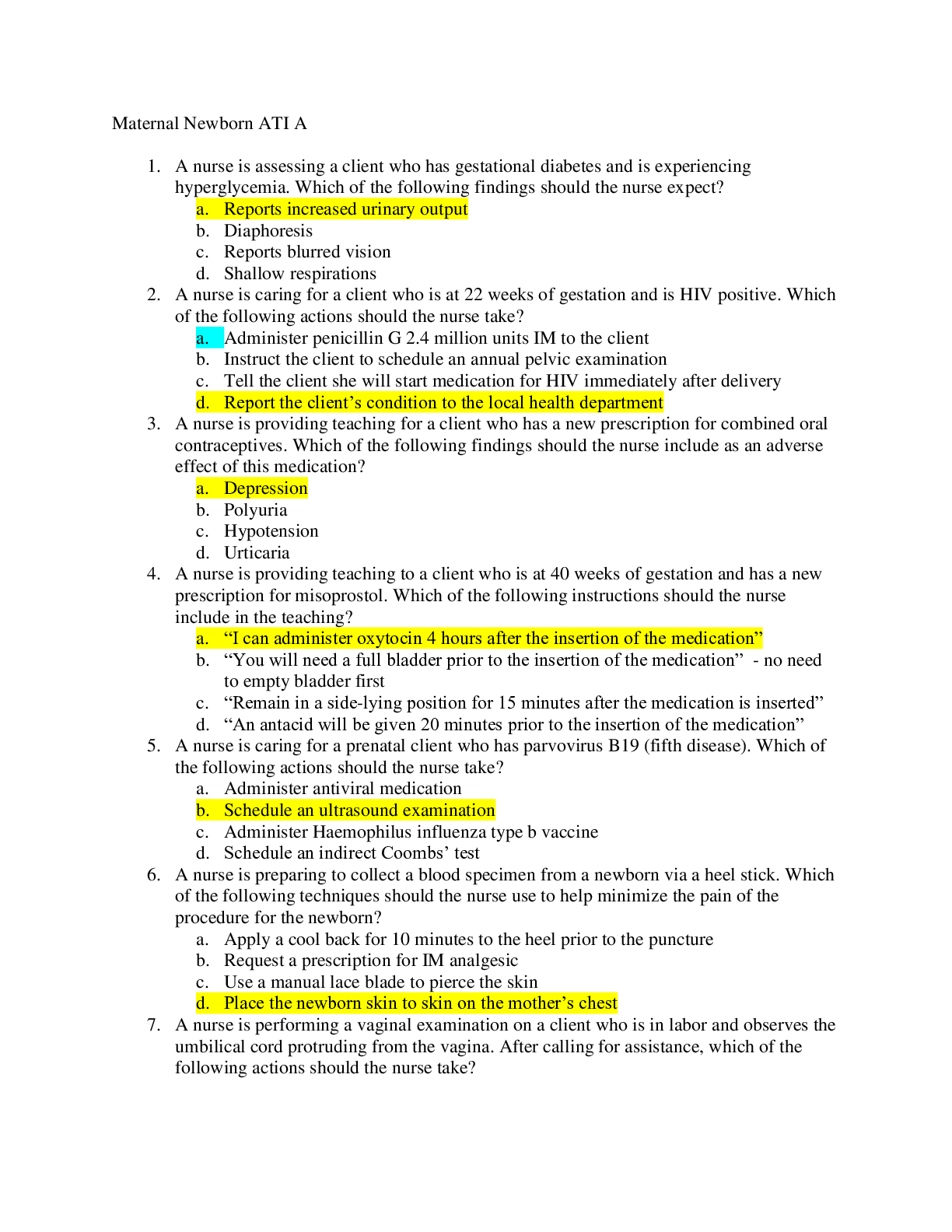

.png)

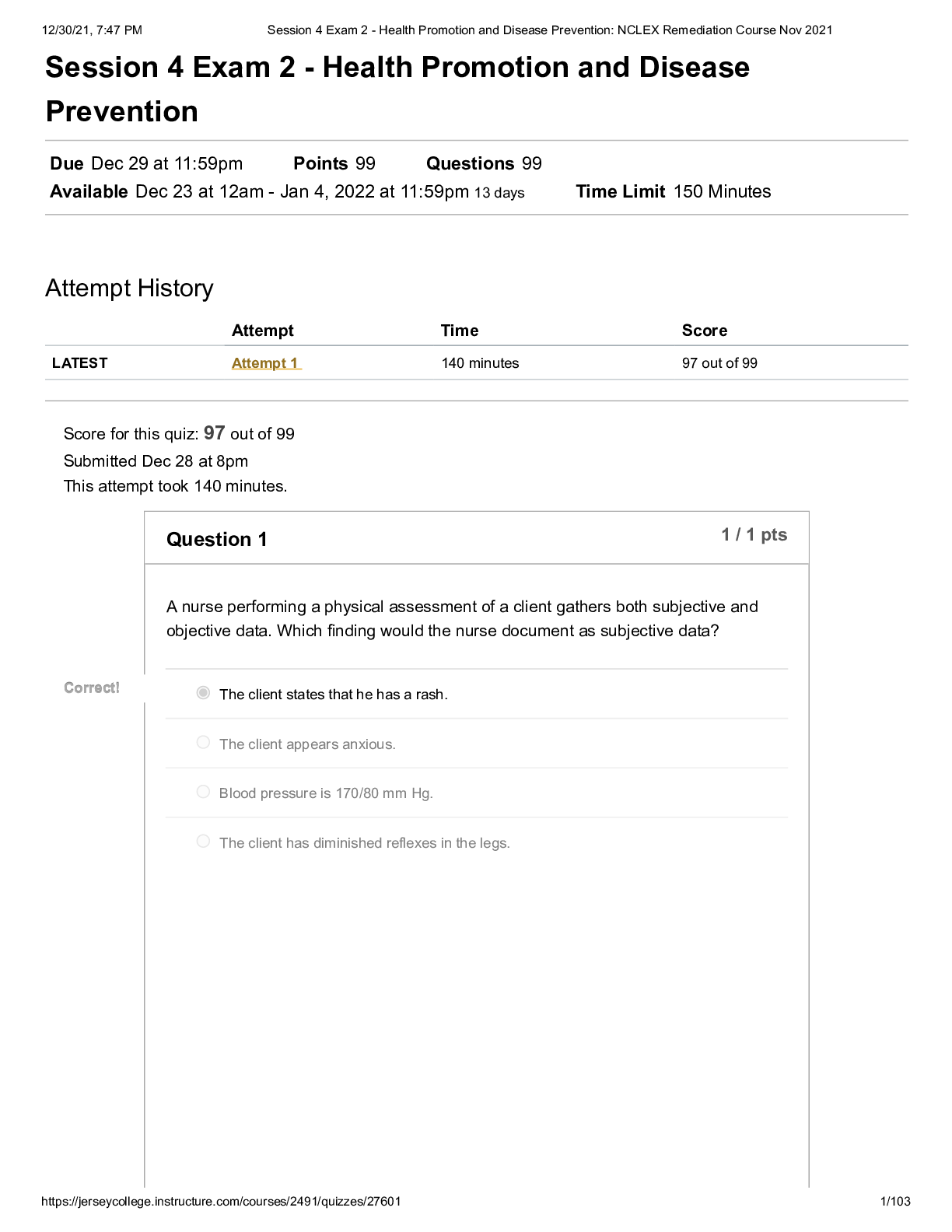
 ORGMED ORGANIC PHARMACEUTICAL PHARMACY.png)

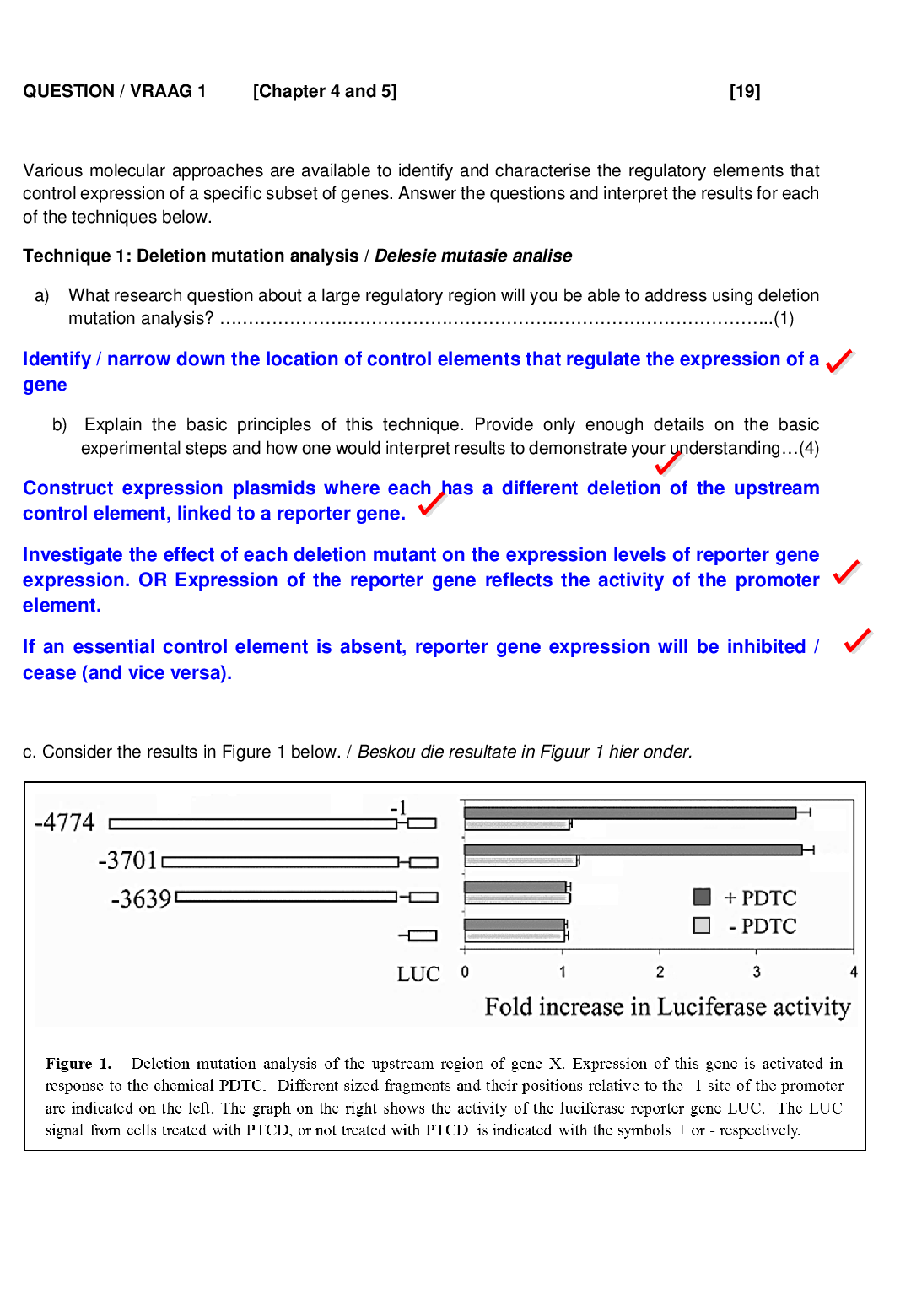
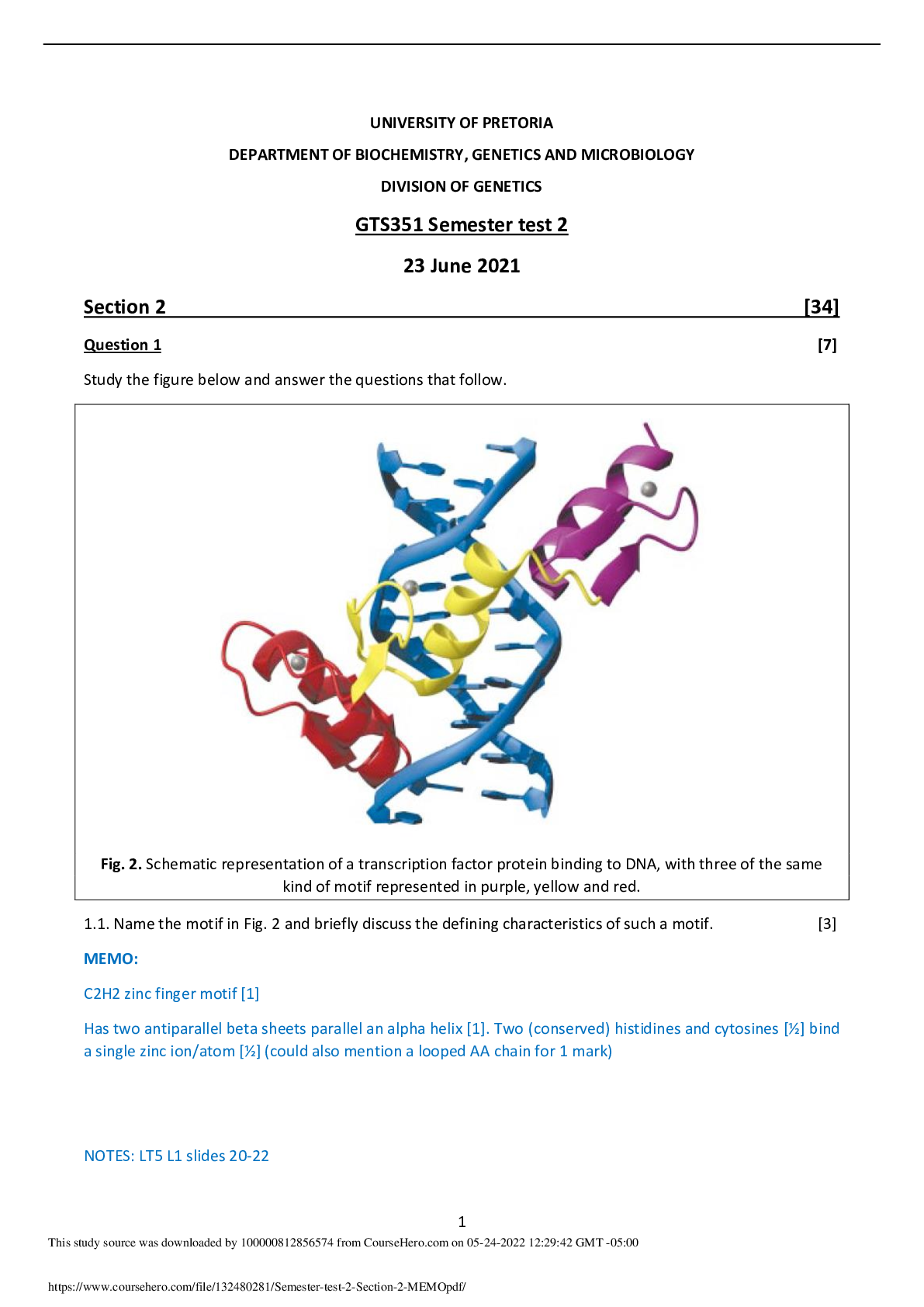

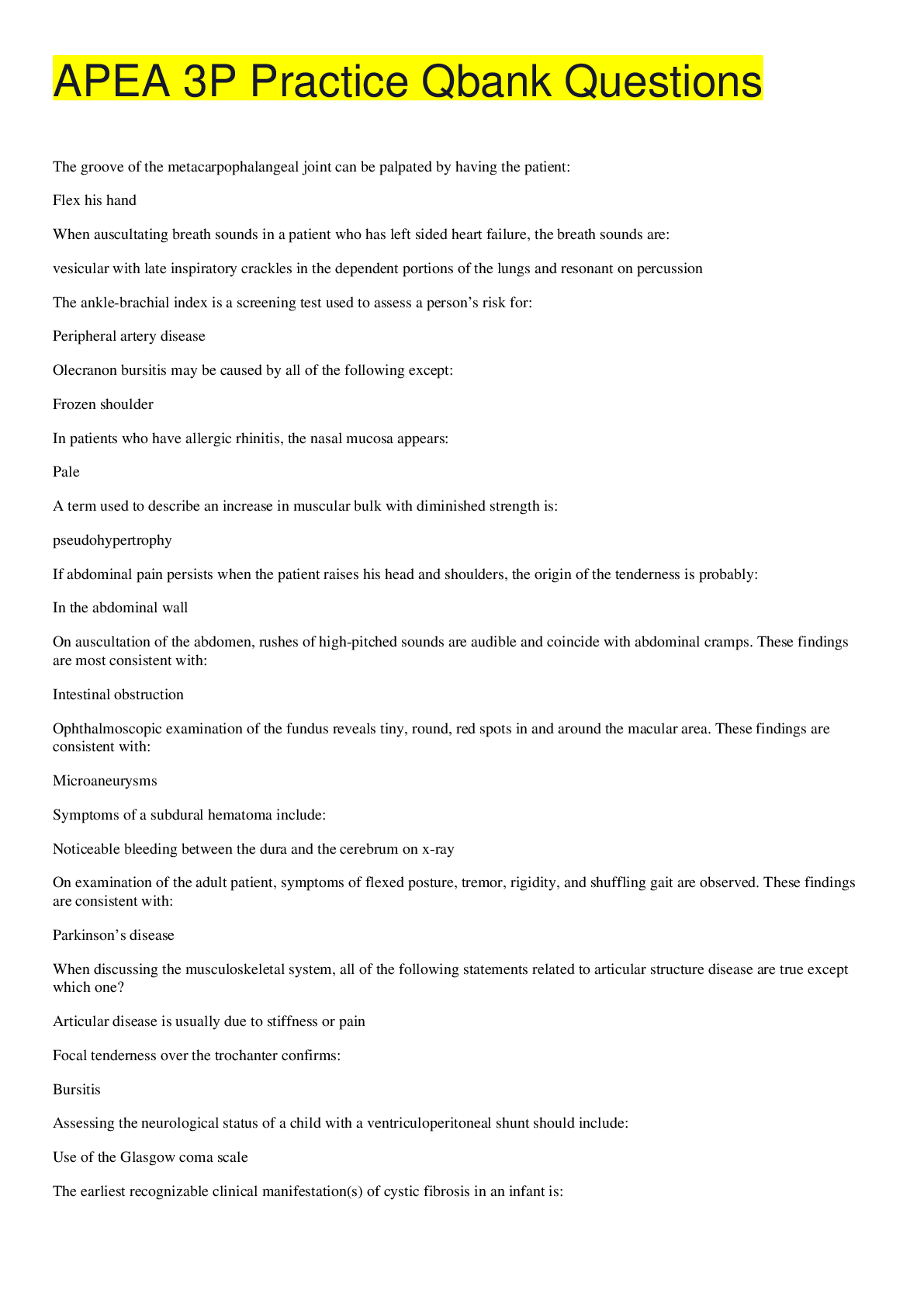
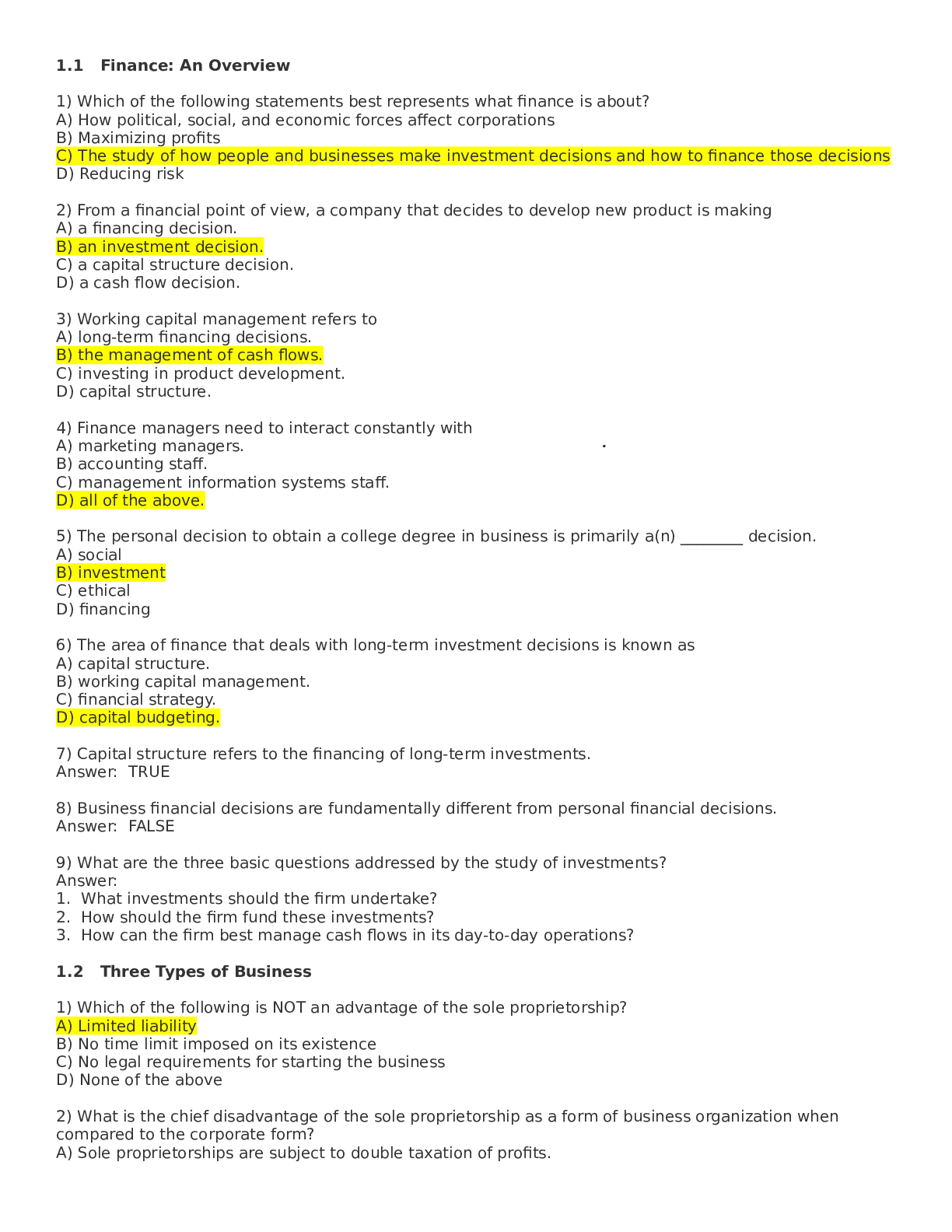



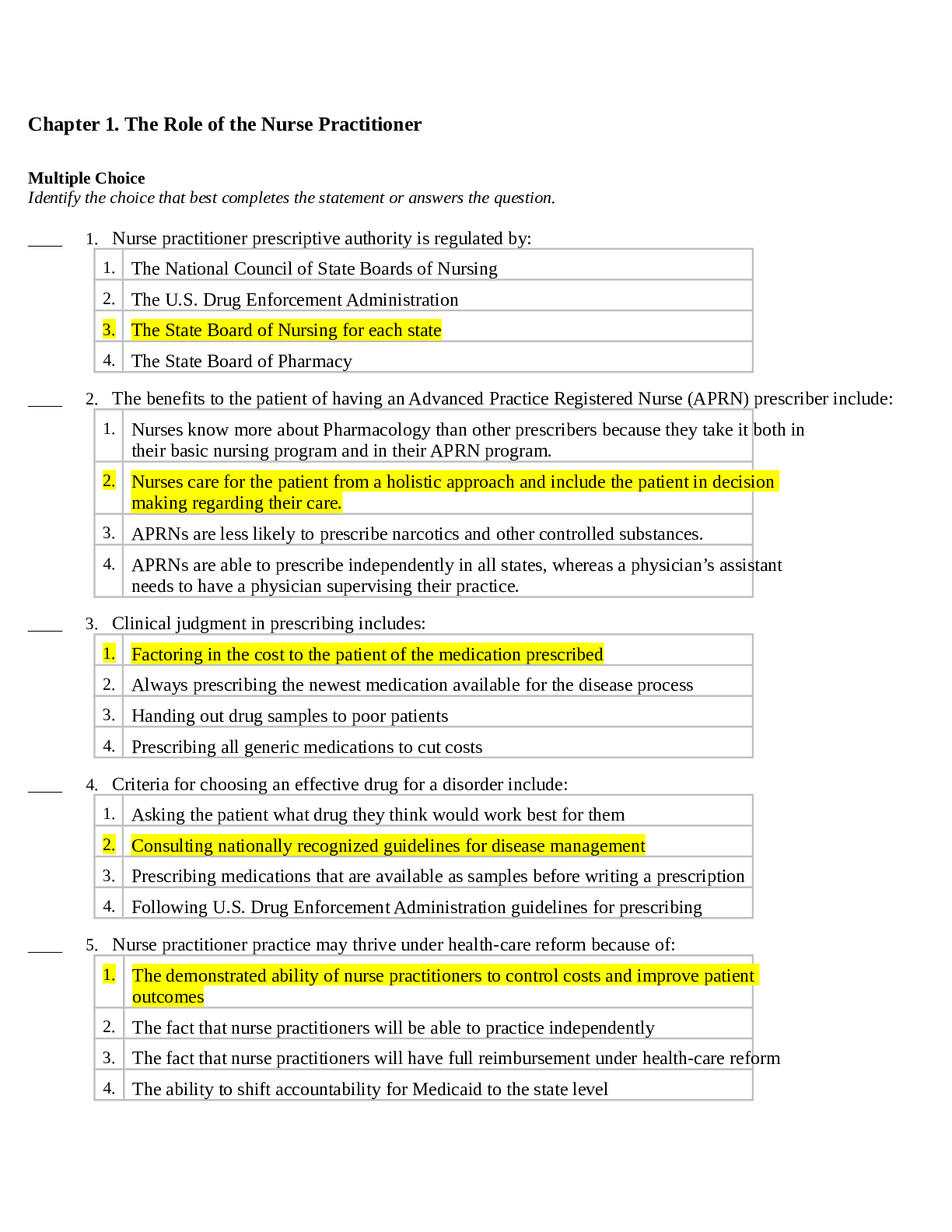
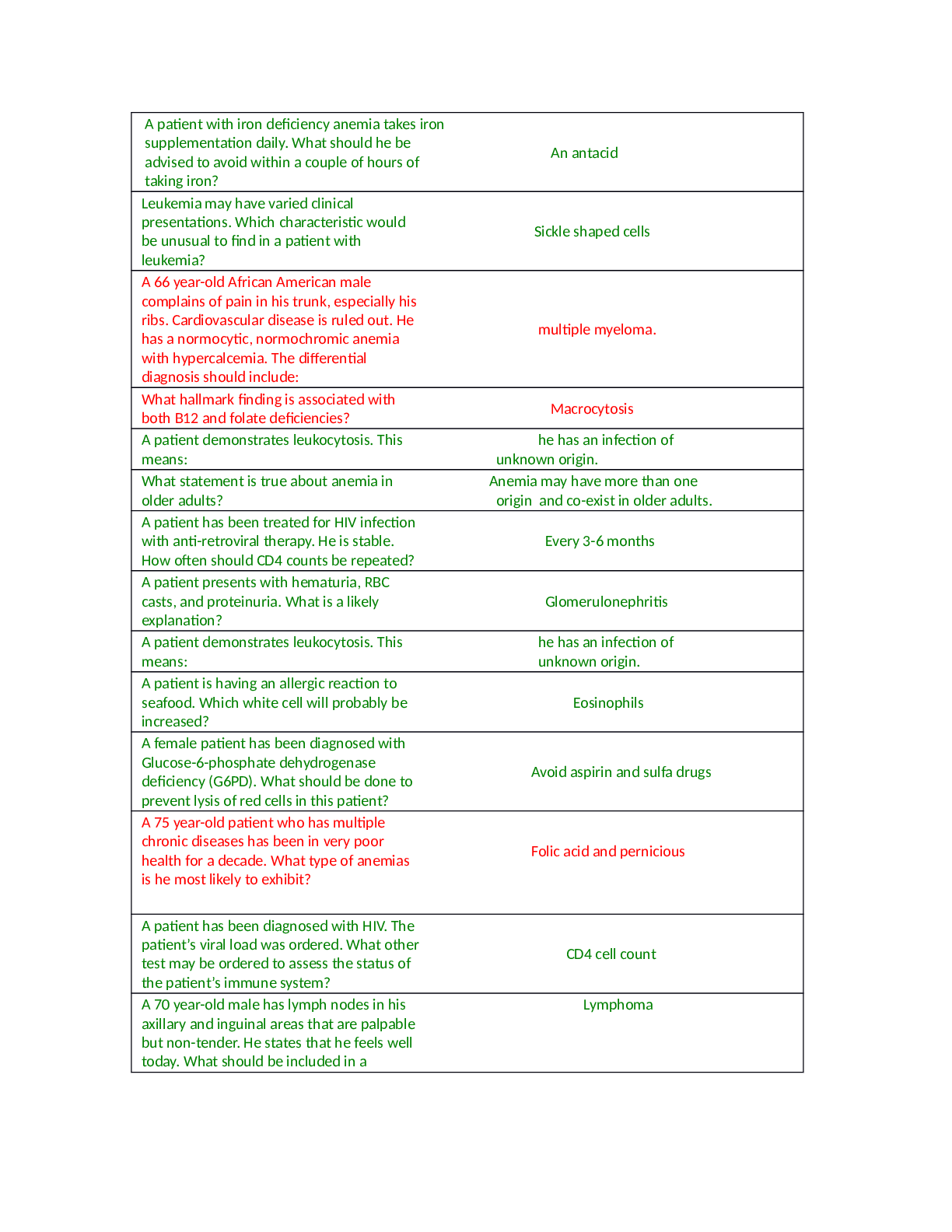
.png)
.png)


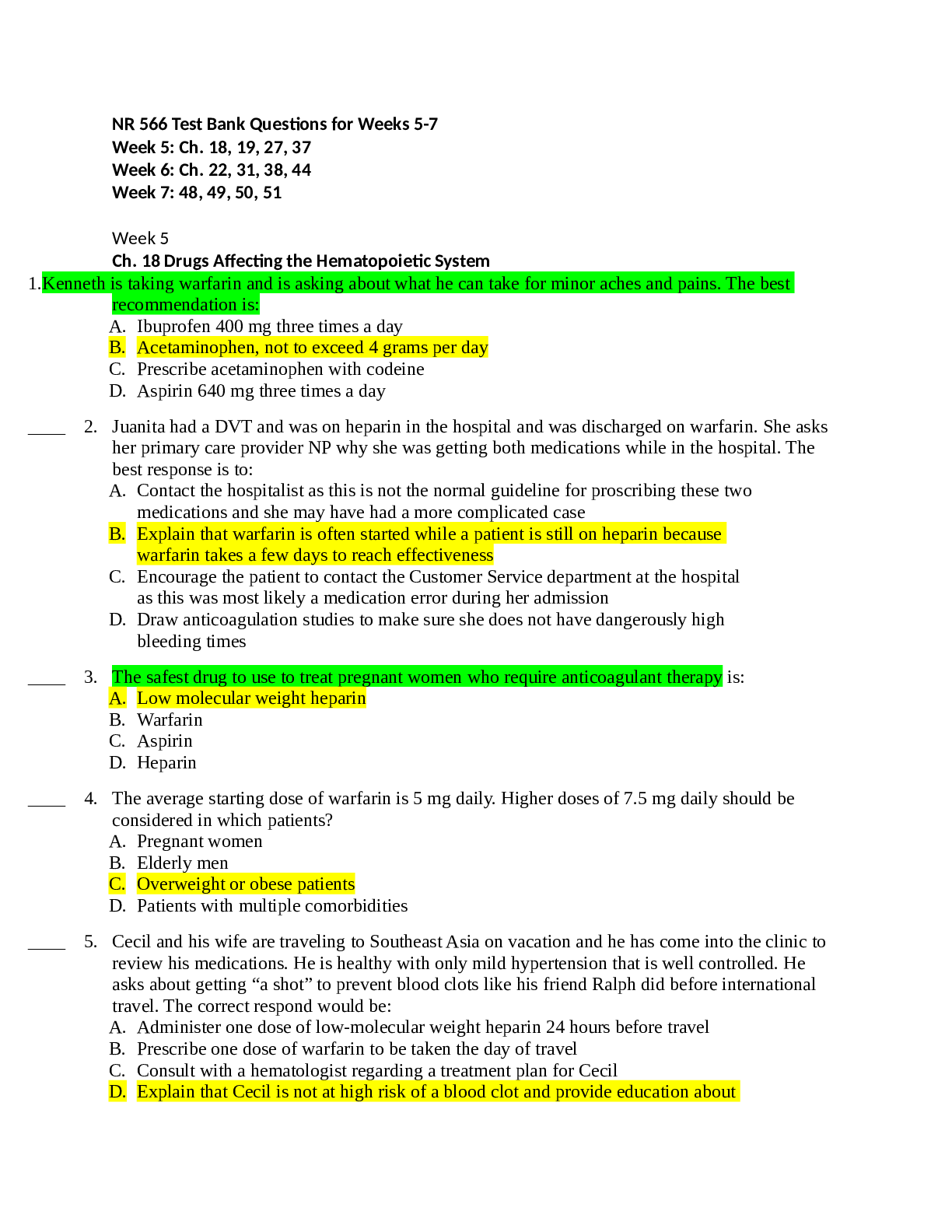
.png)

